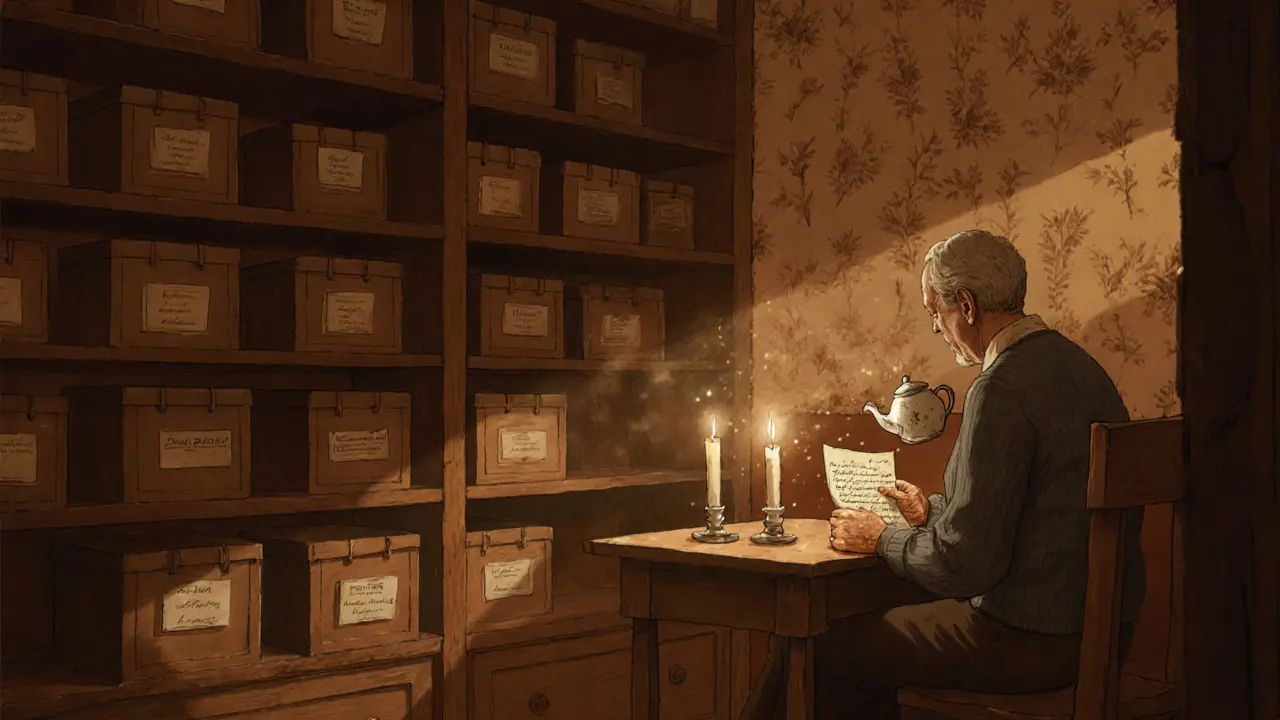Discover the Hidden Gems of Paris with a Local Guide Who Knows the City Inside Out

Paris isn’t just the Eiffel Tower and the Louvre. If you’ve been before, you know that. If you’re planning your first trip, you’ve probably seen every travel blog pushing the same five spots. But what if you could skip the crowds, avoid the tourist traps, and find the quiet courtyards, secret bookshops, and family-run bistros that locals have been visiting for generations? That’s where a knowledgeable local guide makes all the difference.
Why a Local Guide Changes Everything
Most tourists spend their time in Paris chasing Instagram moments. They line up for croissants at the same bakery everyone recommends. They wait 45 minutes to see the Mona Lisa, only to snap a photo from ten feet away. Meanwhile, the real Paris-the one with character, history, and soul-lives just off the main streets.
A good local guide doesn’t just show you places. They tell you why they matter. They know which boulangerie uses stone-ground flour from Normandy. They know the alley behind the Marché des Enfants Rouges where the best crêpes are made at 8 a.m. before the tourists arrive. They know the church in the 13th arrondissement with stained glass so beautiful, even most Parisians have never stepped inside.
This isn’t about luxury or extravagance. It’s about access. Access to places that don’t appear on Google Maps. Access to stories that aren’t in guidebooks. Access to a rhythm of the city that you won’t find in a group tour.
The Hidden Courtyards of Le Marais
Le Marais is packed with visitors, but almost no one finds the courtyards tucked behind its ornate 17th-century facades. Walk past the souvenir shops on Rue des Rosiers, turn left at the tiny brasserie with the faded awning, and you’ll find yourself in a quiet square where laundry hangs between old stone buildings. A woman in her 70s tends to her window boxes every morning. A cat naps on a bench no one else notices.
This courtyard has been here since 1680. It was once the private garden of a Jewish merchant family who survived the war by hiding documents in the walls. Today, it’s maintained by the city, but rarely visited. A local guide will point out the carved initials on the stone arch-each one a name from the 1920s, left by the original residents.
The Bookshop That Doesn’t Sell Books
There’s a shop on Rue des Martyrs that looks like a regular bookstore. But the shelves are empty. Instead, there are wooden boxes, each labeled with a name and a date. Open one, and you’ll find handwritten letters, old photographs, or a single pressed flower. This is La Boîte à Lettres, a private archive of personal stories collected over 30 years.
Visitors are invited to sit in the back room and read one letter-any one. No photos. No notes. Just silence and a cup of tea. The owner, a retired librarian named Claudine, only lets in five people a day. She doesn’t advertise. She doesn’t take reservations. But if you know someone who knows someone, she’ll let you in.
That’s the kind of place a guide finds for you. Not because they’re trying to be exclusive, but because they remember their grandmother used to come here every Sunday.
The Secret Garden Behind the Opera
Most people think the Palais Garnier is just an ornate opera house. But behind the grand staircase, past the staff entrance, there’s a walled garden no tourist brochure mentions. It’s only open to residents of the 9th arrondissement-and the occasional guest invited by a local.
There’s a 150-year-old chestnut tree there, its roots cracked by decades of rain. Beneath it, a bronze plaque reads: “In memory of those who danced here during the siege.” During World War II, the opera house was used as a shelter. People danced in the basement to keep their spirits up. After the war, the garden was planted to honor them.
It’s quiet now. No music. No crowds. Just birds and the sound of wind through the leaves. A guide will sit with you there for ten minutes and tell you about the woman who still brings flowers every November 11.

Why “Escort” Isn’t What You Think
The word “escort” can sound misleading. But in this context, it’s not about romance or companionship in the romantic sense. It’s about presence. It’s about someone who walks beside you, answers your questions, notices when you pause in front of a door and wonder what’s inside-and then opens it for you.
A true local guide doesn’t sell packages. They don’t push you toward expensive restaurants or overpriced museums. They ask: “What do you want to feel today?”
Do you want to feel the weight of history in a forgotten cemetery in Montparnasse? Do you want to taste the first sourdough bread baked in Paris in 1973? Do you want to sit in a 19th-century apothecary where the pharmacist still mixes herbal remedies the old way?
The best guides don’t have a script. They have memories. And they’re willing to share them.
What to Look For in a Guide
Not everyone who calls themselves a guide knows Paris. Here’s what separates the real ones from the rest:
- They don’t use a headset or a clipboard. They carry a notebook, maybe a coffee cup, and a pair of comfortable shoes.
- They mention places you can’t find on Google. If they only list museums and cafés with 4.8-star ratings, walk away.
- They know the city’s rhythm. They’ll suggest visiting the flea market at dawn, not noon. They’ll tell you when the baker opens, when the light hits the Seine just right, when the street musicians start playing near Pont Alexandre III.
- They’re not afraid to say, “I don’t know.” The best guides admit when they’re unsure. They’ll call a friend or check with someone who does.
- They charge by the hour, not by the package. A 4-hour walk should cost less than a dinner at a tourist trap.
A guide who charges €200 for a “luxury experience” and takes you to the same places as every other tour? That’s not a guide. That’s a salesperson.
Real Stories, Real People
One woman from Texas came to Paris after her mother passed. She didn’t want to see the sights. She wanted to sit where her mother once sat. Her mother had written in a journal: “I drank coffee at the corner table at Café de Flore in 1962. The waiter knew my name.”
The guide didn’t take her to Café de Flore. He took her to a tiny café on Rue de la Bûcherie that closed in 1980. The building still stood. The owner’s son still lived upstairs. He remembered the woman. He brought out the original coffee cup-chipped, yellowed, still on the shelf. He handed it to her. She cried. That’s the kind of moment no app can deliver.
Another man from Japan came to find the street where his grandfather worked as a tailor in 1947. He had a photo: a man in a suit, standing outside a shop with a faded sign. No name. No address. Just a street number. The guide spent two days asking elderly shopkeepers, digging through municipal archives. He found it. The building had been turned into a bookstore. The owner, a woman in her 80s, remembered the tailor. She gave the man his grandfather’s last stitch sampler-hidden behind a shelf for 78 years.
That’s what a real guide does. They don’t show you Paris. They help you find what Paris has been hiding from you.

How to Find the Right One
Start by avoiding platforms that treat guides like Uber drivers. Look for independent operators. Check local forums like Parisian by Choice or The Parisian. Read reviews that mention specific places-not just “great guide!” but “they took me to the clockmaker on Rue de la Harpe who still repairs 18th-century pendulums.”
Ask for a short free call. A good guide will spend 15 minutes asking you questions: What do you love? What scares you? What do you want to remember? If they pitch you a list of attractions, they’re not the one.
Book for 3-4 hours. Longer isn’t better. You don’t need to see everything. You need to feel one thing deeply.
What You’ll Leave With
You won’t leave with a bag of souvenirs. You’ll leave with a story. Maybe it’s the taste of a forgotten pastry from a bakery that closed last year. Maybe it’s the name of the woman who still waters the roses in the cemetery where your great-grandfather is buried. Maybe it’s the quiet moment when you realized you weren’t just visiting Paris-you were stepping into someone else’s memory.
That’s the hidden gem. Not the place. The connection.
Is a Paris escort service the same as a romantic companion?
No. In this context, an escort is a local guide who knows the city’s hidden spots and shares personal stories. It’s not about romance or personal services-it’s about cultural access and authentic experiences. The term is sometimes used loosely, but reputable guides focus solely on education, history, and local insight.
How much should I expect to pay for a private guide in Paris?
A fair rate is €40-€70 per hour, depending on experience and specialization. Avoid anyone charging over €100/hour unless they’re a historian, author, or museum curator with published work. Most excellent local guides work independently and don’t need inflated prices to prove their value.
Can I book a guide for just one hour?
Yes, but it’s rare. Most guides prefer 3-4 hours because it takes time to move off the beaten path and build a real connection. If you only have an hour, ask if they offer a focused mini-tour-like “Secret Bookstores of Saint-Germain” or “The Best Hidden Cafés Near Montmartre.”
Are these guides licensed or certified?
France requires official licenses for guided tours inside museums and monuments, but not for street walks or private experiences. Many excellent guides aren’t licensed-they’re just deeply knowledgeable locals. Ask for references, read reviews, and trust your gut. A license doesn’t guarantee insight.
Can I bring my kids on a private guide tour?
Absolutely. Many guides specialize in family-friendly tours-turning history into stories, turning alleyways into treasure hunts. Ask if they’ve worked with children before. Some even bring small props: vintage postcards, old coins, or maps from the 1920s to make the experience engaging for younger visitors.
Next Steps: How to Start
Don’t wait for the perfect time. Paris doesn’t change much-but the people who know its secrets are getting older. The baker who remembers the war. The librarian who still writes letters to strangers. The widow who waters the roses every morning.
Find one guide. Book a walk. Ask them to take you somewhere quiet. Sit with them. Listen. Let the city reveal itself-not in monuments, but in moments.

Write a comment